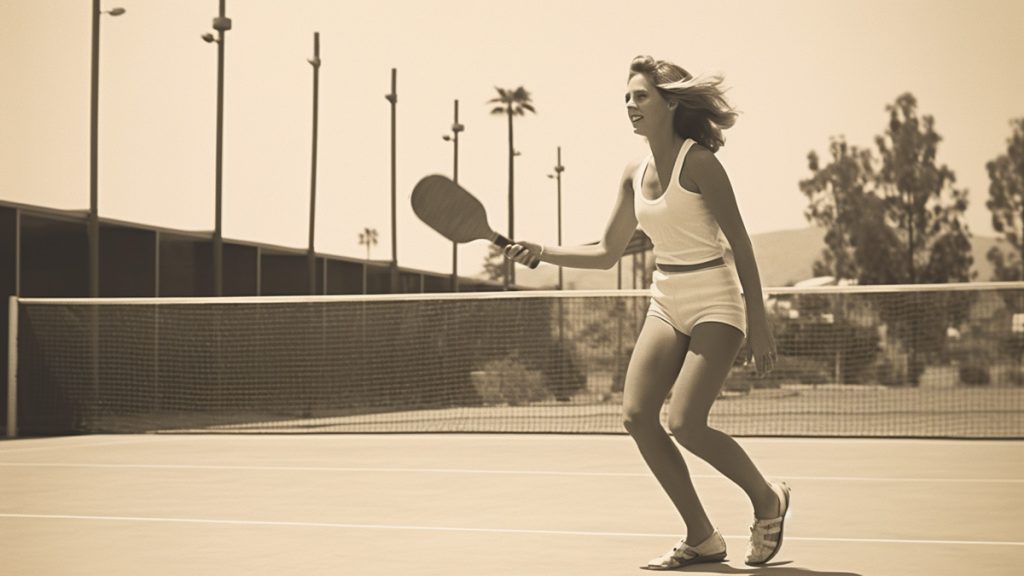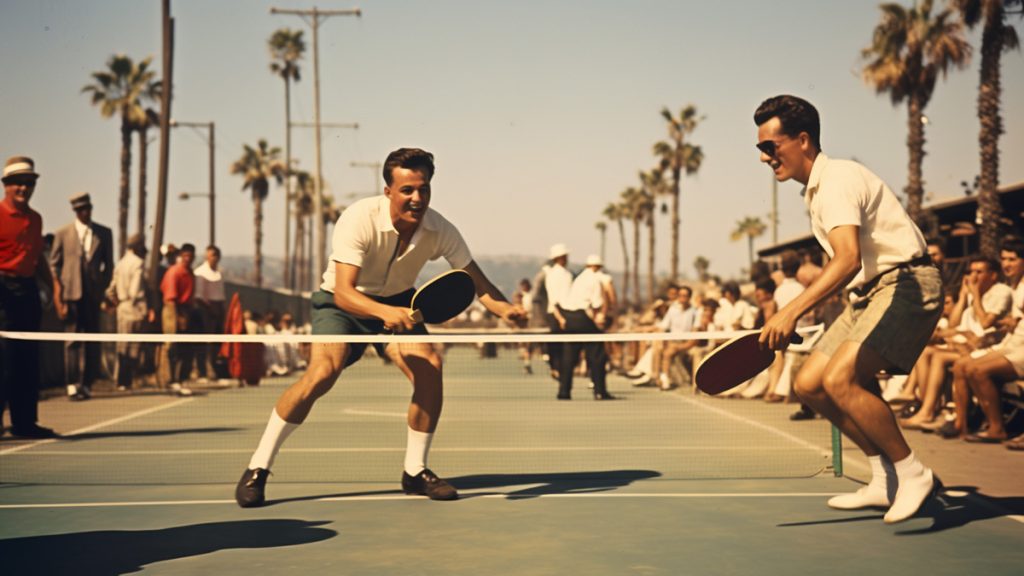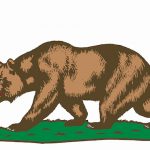Why Is It Called Pickleball: Decoding the History

For many, pickleball seemed to have popped up out of thin air, sweeping the nation as one of the most popular sports of modern times. It’s not difficult to see why pickleball has become a huge craze–there is an easy entry point and simple rules, and people of all ages, athletic abilities, and skill levels can participate. But why is it called pickleball? Where did that name even come from?
Off the bat, you might envision someone using pickles in the sport in some sort of capacity. Perhaps an instrument within the sport is shaped like a pickle? The bat? The court? Or maybe it’s tradition to go out and munch on pickles if your team wins. The name alone makes the imagination run wild for outsiders, but if you’d really like to decode the history of pickleball and how the popular sport got its name, read on.
But first, let’s give a round of applause to Joel Pritchard, Bill Bell, and Barney McCallum–the founders of the sport.

Table of Contents
Origins of Pickleball: The Dog Story
Many wonder how the dog pickles became history, so we will start there. One of the founder’s of pickleballs families has a dog named Pickles, and legend has it that the name of the game was named after him.
Another version of the story suggests that this is not the true origin of the famous game’s name. Even the Pritchard’s have rejected this idea, stating that the dog came long after the game was created, and that Pickles in fact was named after the game–not the other way around. Supposedly, confusion arose due to the media reporting incorrect information about the pickleball origin story because it was easier for readers to digest than the actual story.
Ok so if the Pritchard’s family dog Pickles isn’t the true North Star to the game’s name, why is it called pickleball? What does pickle mean in pickleball? What is the true origin story? So what is the true origin story?

Origins of Pickleball: The Pickle Boat Story
The pickleball name origin has two other potentials, though this is the more likely of the two. Legends state that the birth of pickleball was on Bainbridge Island in Washington, thrown together by a group of friends who were looking for inventive ways to entertain their children and keep the family connected while getting some exercise. Little did they know that this somewhat leisurely, sports-forward innocent game would grow to be a half a billion dollar industry.
This first go-around of pickleball–before it gained its legendary name–was back in 1965, though the game they created at the time is not so far off from the pickleball we currently know and love. Despite consisting of thrown-together, leftover pieces of equipment from other games, the combination managed to work out well. The doubles badminton court was the specific court that the game happened to be created, and that size court is what is still used for today’s games. The paddles used during the first commencement were ping pong paddles, which have evolved since, though the wiffle ball used for the first game is also relatively similar to the plastic ball with holes used in today’s pickleball.
Ok but cut to the chase here–why is it called pickleball? The true origin story lies in the fact that the game was birthed not from new, fancy equipment, but from leftovers from other games. Pritchard’s Wife, Joan, took this idea of leftovers and ran with it–naming the game after the pickle boats in rowing–namely crew races. Said pickle boats consisted of non-starters, in other words leftovers from other boats that no one wanted. The pickle boat was notoriously known for being the least competitive boat in the entire race, with a crew that was thrown together consisting of oarsmen chosen from the leftovers of other boats. Since the game was born using leftover random equipment and a court from a few different sports, we think it’s pretty fitting. Only other name that sounds as well-suited could be the Leftovers–but that name doesn’t have the same ring to it, now does it?
Bill Bell, another founder, also claimed he named the game because he enjoyed hitting the ball in a way that put his opponent “in a pickle.” Who is to say the truth? We think the pickle boat story rings truest, but we will let you have your own thoughts on the matter.
If you’re fascinated by the origins of racket sports in San Diego, we dedicated a whole article to educating you on it! We’ve also curated an article on local racket sports history for the tennis lovers and paddle sport inclined folks.
Where Does Joel Pritchard Come In
As we have briefly mentioned, Joel Pritchard–and his wife–play a big role in the invention of pickleball. Prior to the sports inception, Mr. Pritchard was elected to the Washington U.S. House of Representatives in 1958, where he served for 8 years, and later came to serve in the United States Congress as Washington’s lieutenant governor.
As a businessman and politician, it’s no surprise that Joe has a keen eye for business opportunities. Although pickleball started as something to simply pass the time and keep the kids and family occupied, not with the intention of making it a nation-wide, lucrative sport, we owe it to Joel and his wife for the name and the game.
Evolution of Pickleball
Naturally, pickleball evolved to include more stern rules that made the game more active, competitive, functional, and orderly. Most importantly, the evolution of pickleball allowed it to be more enjoyable for all parties, harnessing effective equipment to help prevent fatigue and promote optimal play.
Specific balls were designed for indoor play and for outdoor play, allowing the player to adapt to their environment more seamlessly. This plastic ball with holes resembles a wiffle ball. The paddles–which are about twice the length of a ping pong paddle–have become more durable and easier to hold, helping the players follow through with their swing and hit powerful shots with more control and precision. Needless to say, the evolution of the gear and equipment in comparison with the hodge hodge of random items used in the initial pickleball game have made it immensely better for game play.
As you can probably deduce, table tennis, badminton, racquetball and tennis are the racket and paddle sports that pickleball is most closely related to. So what made pickleball stand out from the rest? Could it be in the name?

Impact of the Name ‘Pickleball’ on the Game’s Popularity
Let’s be real, the name pickleball perks up the ears of many. People get curious by silly names that have more significant meanings. With a name that can pique the interest of a wide audience, it’s no wonder why it quickly became the talk of the town. Racket sport lovers tend to be very black and white with their love or hate for pickleball, because it does possess some similarities to tennis and badminton, and is even played on a doubles badminton court.
Those who are familiar with a racket sport are often keen to try it on for size to see if it lives up to its name, and those who are too overwhelmed by tennis and the cardio required might find greater appeal for pickleball as the court and rackets are smaller than regular tennis. It’s safe to say that pickleball has an appeal that can traverse age, background, and experience level. Just like the game, the name is playful and inviting to newcomers.
Fastest Growing Game in America
In 2023, the Sports & Fitness Industry Association (SFIA) stated Pickleball is the fastest-growing sport in America, for the third consecutive year. That’s right, this paddle sport is BOOMING, and manufacturers of pickleball products are certainly in the right market right now. Between 2020-2022 alone, the United States saw a 113% increase in participation in the sport, which blows most other sports out of the water. This rapid rise is a clear indicator that pickleball appeals to the masses, and is certainly here to stay.
Many attribute the popularity of pickleball to its low barrier to entry, while others claim that the social aspect, adaptability, and accessibility make it hard not to love–no matter what your age or skill level.
How to Play Pickleball
Pickleball is played on a court that is 20 x 44 feet. This is the same size as a doubles badminton court–which makes sense since that is the exact court the game was created on. Players will use a wooden or, more commonly, a composite paddle, which is roughly twice the size of a ping pong paddle. The ball they will be playing with is a plastic perforated ball.
The player’s objective is to hit the ball over the net–but within the court’s boundaries–and prevent the opponent from hitting it back to your side. To accomplish this, you can hit shots that are difficult for your opponent to receive. Of course, learning how to do this effectively comes with time, but speed, spin, position, location, power, and aim–once mastered–are all ways to make it harder for your opponent to return the ball.
Some of the basic rules of pickleball include that there must be one bounce per side, meaning the ball must bounce on each of the teams sides to start each rally. There is 7ft off the net on each side of the court that is called “The Kitchen.” What is the kitchen, you may ask? The Non-Volley Zone (NVZ) is where absolutely no volleying is allowed. In fact, you can’t touch the kitchen in ANY way–before, during, or after a volley. The NVZ boundary also includes its lines. If you’re standing on the line, you’re standing in the NVZ.
Some rules related to serving include servers not being allowed to land in the NVZ, also including the demarcation line. Conversely, a serve is in bounds if it lands on any line other than the NVZ. After serving, however, it is okay for the ball to land in the NVZ. An interesting serving rule is that the ball can in fact hit the net during a serve and is considered in play as long as it doesn’t touch the kitchen and also lands in the correct service court. This one can be tricky for those just learning the rules or those familiar with tennis.
Pickleball games traditionally end at 11 points, though a team must win by a 2 point lead. The game will continue on until there is a 2 point lead, and it should be noted that in tournament games, sometimes the game is played up to 15 or 21 points.
There are many tricks and techniques a player can use to get an advantage. A dink is a primary example, which gives the opponent something high and limiting. It can serve as a neutralizing shot to help you get back to a good page because It forces your opponents to hit the ball a certain way–up. The narrow options for their return on your dink can limit their ability to use speed, which can allow you to return their ball with more power and control. In order to dink–which is a slow shot–it’s a good idea to keep the paddle facing front at all times. You must have stable wrists and hit with confidence, right in the center of the paddle.
Why is Pickleball Controversial?
Strangely enough, pickleball has become a topic for debate. Due to the loud, and frankly obnoxious noises of the paddle and ball hitting back and forth, and the banter amongst the players that follows, people–especially nearby neighbors–are not happy. The banter can lead to ugly turf wars and ultimately noise complaints from nearby neighbors trying to enjoy a peaceful afternoon. There are even potential crime charges related to pickleball. Believe it or not, in some communities, pickleball is actually banned.
Pickleball is often played late into the night, and sometimes early morning–all days of the week–and it is much louder than golf and tennis. The growing popularity means more development of pickleball courts.
Despite the sport seeming relatively harmless on the surface, pickleball has sparked disputes and even lawsuits due to noise complaints related to pickleball activities. It’s not hard to see why, and we feel for the homeowners situated near country clubs and open plots of land that are optimal hunting grounds for pickleball players and builders. Who would want the expansion of more courts close to the vicinity of your home? Can you imagine trying to enjoy a nice cup of tea and a book on your back porch, only to be bombarded with chatter, popping and clicking noises?
If pickleball isn’t your cup of tea, we have a list and San Diego adult attractions to choose from!

When and Why Was the Official Pickleball Association Formed?
Due to the rapid growth and advancements of Pickleball on a national level, the Official Pickleball Association was formed in 2005. The U.S.A.P.A. – otherwise known as the United States Amateur Pickleball Association, was formed in 1984, with an official rulebook–which is still being used and continuously updated to this day. This association certainly paved the way for the official association to form with a committee and official rule book.
USA Pickleball Association
The USA Pickleball Association was created to help establish rules and connect communities who have an affinity for the game. Pickleball lovers and competitive players can show appreciation for this association as they are the reason open play, competitions, leagues, and tournaments across the nation even exist.
It wasn’t until 2018 that the Pro Pickleball Association was founded, in Salt Lake City, Utah. The pickleball association helps address issues within the pickleball community, keep people informed on the latest updates and trends in the industry, and most importantly provides a place to help organize local, state, or nationwide leagues and tournaments with order and ease. The association and it;s members are responsible for making important decisions within the pickleball sphere and help make competitions with the big dogs across the states happen. It wasn’t until 1990 that pickleball was played in all 50 states, and the pickleball association hopes to help spread the word and make tournaments across the nation possible.
International Federation of Pickleball
The International Pickleball Federation–IPF, is the world governing body of the sport. It was established to develop and grow the sport all over the globe–an extension beyond the USA Pickleball Association. Their main mission is to introduce the sport to every single nation, so that other countries can acknowledge and embrace pickleball as one of their national sports. This is all with a greater goal in mind.
What is that goal, you may ask? The ultimate goal of IPF is to help Pickleball gain recognition by the International Olympic Committee (IOC) to eventually establish it as an Olympic sport. As of now, there are 77 member countries and 91 organizations, with more to come. In order to be accepted, the sport must be practiced by men in at least 75 countries and on 4 continents, and by women in at least 40 or more countries and 3 or more continents. National governing bodies include Hong Kong, Denmark, Great Britain, Italy, and Iran.

The First Pickleball Tournament
The first PickleBall tourney took place in Washington, at the South Center Athletic Club in Tukwila circa 1976. Many of the participants were college tennis players, who frankly knew very little about pickleball, which demonstrates how the skills of tennis can transfer over to pickleball for players who are familiar with tennis. It was billed as “The World’s First Pickleball Championship” by Joel Pritchard, and was such a phenomenon that it was even mentioned in Tennis Magazine that same Summer. Looking back, some might find that interesting, considering tennis and pickleball are technically direct competitors.
This tournament help set the tone for what was to come, sparking interest all over the nation from both the spectator and player perspective. If you love learning about this type of stuff, or really anything related to pickleball, Pickleball Savant is a great source for all the latest and greatest news in pickleball.
Now that you’re educated on the origin story of pickleball and know the basics of how to play the game it’s time to get out there and hit some balls! If you’re looking for other outdoor activities in San Diego, check out our other informative articles to get some activity inspiration!
Media credits: Unless otherwise noted, the conceptual images of the “why is it called pickleball” topic in this article are copyright of LaJolla.com.





